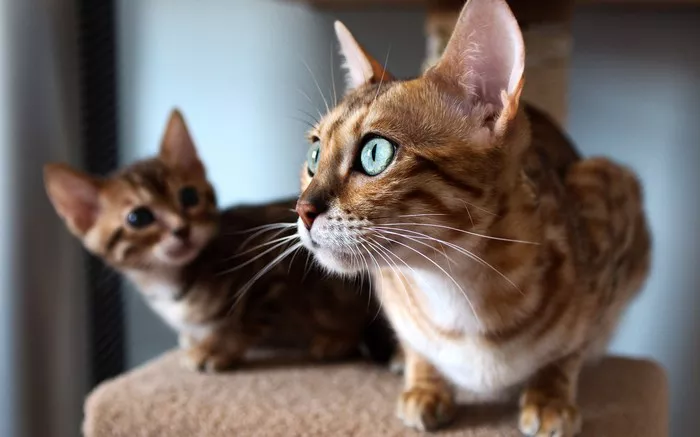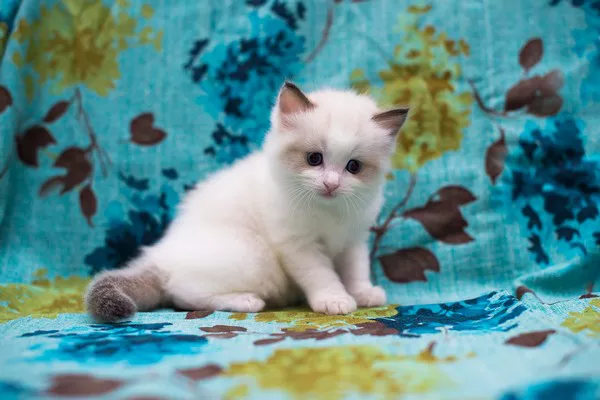Bengal cats, with their striking spotted or marbled coat patterns and energetic personalities, are captivating feline companions that have won the hearts of many cat enthusiasts. As Bengal cat owners embark on the journey of providing a loving and secure home, the question often arises: Will Bengal cats run away? In this comprehensive exploration, we delve into the various factors influencing Bengal cat behavior, the potential for wandering, and strategies to ensure a safe and enriching environment for these spirited felines.
The Nature of Bengal Cats
1. Energetic and Playful Demeanor:
Bengal cats are renowned for their high energy levels and playful nature. As descendants of the Asian leopard cat, they inherit a natural inclination for activity, agility, and exploration. This inherent vigor can contribute to their desire to engage in various physical and mental activities.
2. Curiosity and Intelligence:
Bengal cats are characterized by their innate curiosity and intelligence. They thrive on mental stimulation and enjoy exploring their surroundings. This curiosity, coupled with their keen senses, can lead them to investigate new environments and stimuli, making them more prone to wanderlust.
3. Social and Bonding Behaviors:
Bengal cats often form strong bonds with their human family members. While they enjoy interactive play and companionship, they may also express a desire for independence. Understanding the balance between their social tendencies and need for autonomy is crucial in creating a harmonious living environment.
The Potential for Wandering
1. Territorial Instincts:
Bengal cats possess strong territorial instincts, a trait inherited from their wild ancestors. While they may establish a close bond with their human companions, they may also exhibit a desire to mark and explore their territory. This territorial behavior can influence their inclination to roam.
2. Exploration and Hunting Instincts:
The Bengal cat’s natural instincts for exploration and hunting play a significant role in their behavior. They may be drawn to outdoor spaces, captivated by the sights, sounds, and scents of the environment. This drive to explore and fulfill their hunting instincts can lead to a desire to venture beyond the confines of the home.
3. Environmental Enrichment Needs:
Bengal cats thrive in environments that offer enrichment and stimulation. When their physical and mental needs are not adequately met, they may seek alternative sources of excitement. Outdoor exploration provides a wealth of sensory experiences that contribute to their overall well-being.
Factors Influencing Bengal Cat Wandering
1. Unfulfilled Energy Levels:
Bengal cats require ample physical activity to expend their energy. In households where their play and exercise needs are not met, they may seek alternative outlets for their energy, potentially leading to attempts to escape or explore outdoors.
2. Lack of Environmental Enrichment:
An environment lacking in stimulation and enrichment can contribute to a Bengal cat’s desire to explore beyond the home. Providing engaging toys, climbing structures, and interactive play sessions helps address their need for mental and physical stimulation.
3. Access to Unsecured Outdoor Spaces:
Bengal cats are known for their agility and climbing abilities. If outdoor spaces are easily accessible and not adequately secured, a Bengal cat may be tempted to explore the surrounding areas. Ensuring that outdoor spaces are escape-proof is crucial in preventing potential wandering.
4. Unneutered or Unspayed Cats:
Unneutered male Bengal cats, in particular, may exhibit more pronounced wandering behaviors, driven by the instinct to seek mates and establish territory. Spaying or neutering can help mitigate these tendencies, reducing the likelihood of roaming.
Strategies to Prevent Bengal Cat Wandering
1. Provide Adequate Environmental Enrichment:
Fulfilling the mental and physical needs of Bengal cats is essential in preventing wandering tendencies. Create an enriching indoor environment with toys, scratching posts, climbing structures, and interactive play sessions. Rotate and introduce new toys regularly to keep their interest piqued.
2. Secure Outdoor Spaces:
If you choose to allow your Bengal cat outdoor access, ensure that the outdoor spaces are securely enclosed. Use cat enclosures or catios to create safe environments where your cat can experience the outdoors without the risk of escaping. These enclosures provide a controlled and stimulating outdoor experience.
3. Regular Play and Exercise:
Dedicate time each day for interactive play and exercise with your Bengal cat. Engage them in activities that mimic hunting behaviors, such as using wand toys or puzzle feeders. Regular play sessions help expend their energy and provide a healthy outlet for their natural instincts.
4. Spaying or Neutering:
Spaying or neutering your Bengal cat is a responsible measure to reduce the likelihood of wandering behaviors. This not only helps control the cat population but also minimizes the impact of hormonal influences that may drive unneutered or unspayed cats to roam.
5. Microchipping and Identification:
In the event that your Bengal cat does manage to wander, ensuring they have proper identification is crucial. Microchipping provides a reliable method of identification in case they are found and taken to a veterinary clinic or shelter. Additionally, consider using a secure collar with an ID tag that includes your contact information.
6. Supervised Outdoor Time:
If you have a secure outdoor space, consider providing supervised outdoor time for your Bengal cat. This allows them to experience the outdoors under your watchful eye, ensuring their safety and preventing potential escapes. Supervised outings also allow you to bond with your cat in an outdoor setting.
7. Training and Positive Reinforcement:
Training your Bengal cat to respond to commands and recalls can be valuable in preventing wandering. Use positive reinforcement, such as treats and praise, to reward desired behaviors. Consistent training builds a strong bond and reinforces a sense of safety and security within the home.
Addressing Behavioral Changes
1. Observation of Unusual Behavior:
Pay close attention to your Bengal cat’s behavior and observe for any unusual changes. Signs of restlessness, increased vocalization, or attempts to escape may indicate unmet needs or potential stressors.
2. Consultation with a Veterinarian:
If you notice significant behavioral changes or signs of distress, consult with a veterinarian. Health issues, anxiety, or other underlying factors could contribute to a cat’s desire to wander. A thorough veterinary examination can help identify and address any health concerns.
3. Professional Behaviorist Consultation:
In cases where behavioral challenges persist, seeking the guidance of a professional animal behaviorist can be beneficial. A behaviorist can assess the specific needs and behaviors of your Bengal cat, providing tailored strategies to address any underlying issues contributing to wandering tendencies.
Conclusion
In conclusion, the potential for Bengal cats to run away is influenced by a combination of their natural instincts, environmental factors, and the fulfillment of their physical and mental needs. By understanding the unique characteristics of Bengal cats and implementing proactive measures, cat owners can create a secure and enriching environment that minimizes the risk of wandering. Whether through secure outdoor spaces, regular play and exercise, or positive reinforcement training, the goal is to provide Bengal cats with a fulfilling and safe home where their natural instincts are embraced and their well-being is prioritized.


























